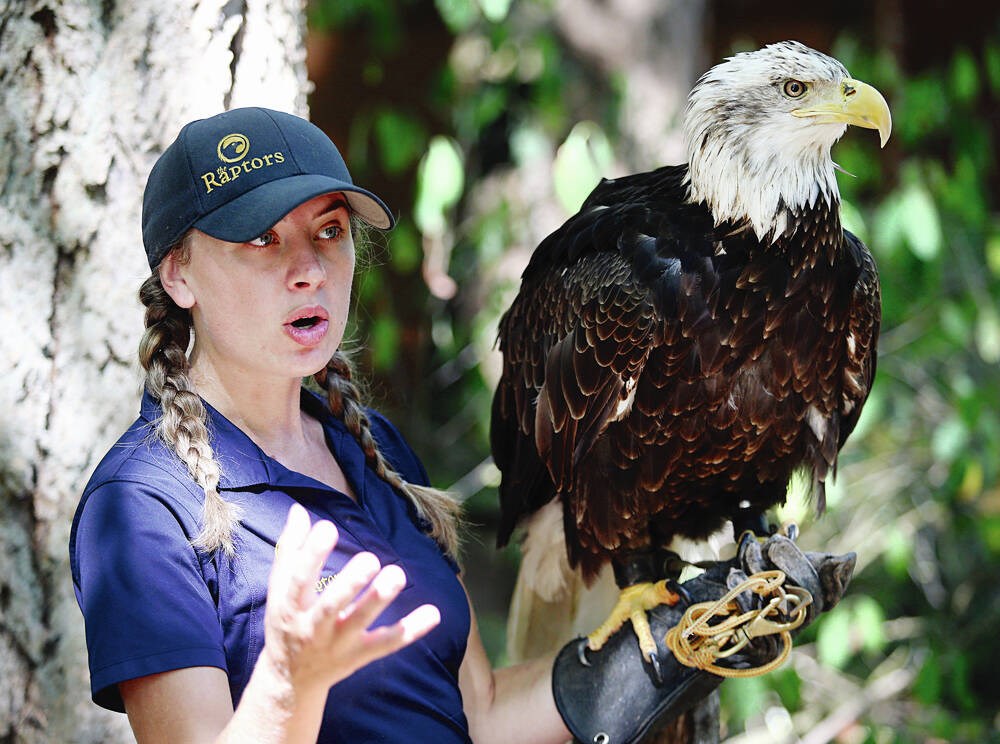Commentary: Defining Raptors and Birds of Prey
Por um escritor misterioso
Last updated 10 abril 2025

Species considered raptors are subjects of monitoring programs, textbooks, scientific societies, legislation, and multinational agreements. Yet no standard definition for the synonymous terms “raptor” or “bird of prey” exists. Groups, including owls, vultures, corvids, and shrikes are variably considered raptors based on morphological, ecological, and taxonomic criteria, depending on the authors. We review various criteria previously used to define raptors and we present an updated definition that incorporates current understanding of bird phylogeny. For example, hunting live vertebrates has been largely accepted as an ecological trait of raptorial birds, yet not all species considered raptors are raptorial (e.g., Palm-nut Vulture [Gypohierax angolensis]), and not all raptorial birds are considered raptors (e.g., skuas [Stercorariidae]). Acute vision, a hooked bill, and sharp talons are the most commonly used morphological characters for delineating raptors; however, using those characters as criteria may cause confusion because they can be vague and exceptions are sometimes made. Old World vultures, for example, are in the family Accipitridae along with hawks and eagles, and thus are usually considered raptors despite their lack of sharp talons. We define raptors as species within orders that evolved from raptorial landbirds (Telluraves) in which most species maintained raptorial lifestyles. Raptors are therefore all species within Accipitriformes, Cathartiformes, Falconiformes, and Strigiformes. Importantly, we believe that seriemas (Cariamiformes) should also be considered raptors. Our definition combines phylogeny with morphology and ecology, and avoids ambiguity associated with owls, vultures, and shrikes. Establishing a common definition of raptors should improve interpretability across studies and lessen ambiguity of research and management recommendations.

Commentary: the Past, Present, and Future of the Global Raptor Impact Network

Mapping our knowledge on birds of prey population genetics

How does this not count for the Fly Like an Eagle Achievement? : r/wingspan

Towards reconciliation of the four world bird lists: hotspots of disagreement in taxonomy of raptors

Belize Raptor Center - Cora wants to remind everyone to save our WhatsApp number. 615-0226 and 615-0266 This is incase you ever need help rescuing an injured bird, want to book a

Raptor Books - A Comparison of North American Field Guides

Ophthalmology of Accipitrimorphae, Strigidae, and Falconidae: Hawks, Eagles, Vultures, Owls, Falcons, and Relatives

Surviving NV's Fiercest Forest Raptor with Mackenzie Jeffress

Black-legged Seriema

Characteristics of Birds of Prey
Journal of Raptor Research

Getting up close and personal with birds of prey - Victoria Times Colonist

Mapping our knowledge on birds of prey population genetics

Published in the Journal of Raptor Research: Defining Raptors and Birds of Prey
Recomendado para você
-
 Birds of Prey - Definition & List of Names With Pictures10 abril 2025
Birds of Prey - Definition & List of Names With Pictures10 abril 2025 -
 bird of prey - Students, Britannica Kids10 abril 2025
bird of prey - Students, Britannica Kids10 abril 2025 -
 Accipitriformes - Wikipedia10 abril 2025
Accipitriformes - Wikipedia10 abril 2025 -
 Bird of Prey Dream Meaning Dream meanings, Dream dictionary, Spiritual meaning of dreams10 abril 2025
Bird of Prey Dream Meaning Dream meanings, Dream dictionary, Spiritual meaning of dreams10 abril 2025 -
 Circus cyaneus, Print, The hen harrier (Circus cyaneus) is a bird of prey. The genus name Circus is derived from Ancient Greek kirkos, meaning 'circle', referring to a bird of prey named10 abril 2025
Circus cyaneus, Print, The hen harrier (Circus cyaneus) is a bird of prey. The genus name Circus is derived from Ancient Greek kirkos, meaning 'circle', referring to a bird of prey named10 abril 2025 -
 Sermon: A Bird of Prey from the East, Isaiah 46.11 – Savage Street Church of Christ10 abril 2025
Sermon: A Bird of Prey from the East, Isaiah 46.11 – Savage Street Church of Christ10 abril 2025 -
 Symbolic Hawk Meaning and Hawk Totem on Whats-Your-Sign10 abril 2025
Symbolic Hawk Meaning and Hawk Totem on Whats-Your-Sign10 abril 2025 -
 Hen Harrier British Bird Of Prey Centre Wales10 abril 2025
Hen Harrier British Bird Of Prey Centre Wales10 abril 2025 -
 What Is a Raptor?10 abril 2025
What Is a Raptor?10 abril 2025 -
 All About Falcon - How Is It Different From A Hawk?10 abril 2025
All About Falcon - How Is It Different From A Hawk?10 abril 2025
você pode gostar
-
 Ah yes,my favorite game. : r/geometrydash10 abril 2025
Ah yes,my favorite game. : r/geometrydash10 abril 2025 -
:max_bytes(150000):strip_icc():focal(899x0:901x2)/paul-nassif-1-fe2175a1eb204e90b1846ad31f12f66f.jpg) Botched's Dr. Paul Nassif Is Engaged: Botched Star to Marry Brittany Pattakos10 abril 2025
Botched's Dr. Paul Nassif Is Engaged: Botched Star to Marry Brittany Pattakos10 abril 2025 -
 F1 22 - Download10 abril 2025
F1 22 - Download10 abril 2025 -
 Skins girls for roblox安卓版应用APK下载10 abril 2025
Skins girls for roblox安卓版应用APK下载10 abril 2025 -
 Roblox: A One Piece Game Free Codes (March 2023)10 abril 2025
Roblox: A One Piece Game Free Codes (March 2023)10 abril 2025 -
 DRAW IT NOW10 abril 2025
DRAW IT NOW10 abril 2025 -
 Desenhos kawaii: Desenhos para imprimir Desenhos kawaii, Kawaii disney, Desenhos de princesa da disney10 abril 2025
Desenhos kawaii: Desenhos para imprimir Desenhos kawaii, Kawaii disney, Desenhos de princesa da disney10 abril 2025 -
 Konosuba: Abençoado Mundo Maravilhoso! Vol. 16 - Livraria da Vila10 abril 2025
Konosuba: Abençoado Mundo Maravilhoso! Vol. 16 - Livraria da Vila10 abril 2025 -
 PS3 Game - Call of Duty Ghosts * PlayStation 3 Game - COD Ghosts10 abril 2025
PS3 Game - Call of Duty Ghosts * PlayStation 3 Game - COD Ghosts10 abril 2025 -
 Naturel Çiftçi 350 gr Şekersiz Katkısız Doğal Yer Fıstığı Ezmesi - Fiyat Performans10 abril 2025
Naturel Çiftçi 350 gr Şekersiz Katkısız Doğal Yer Fıstığı Ezmesi - Fiyat Performans10 abril 2025